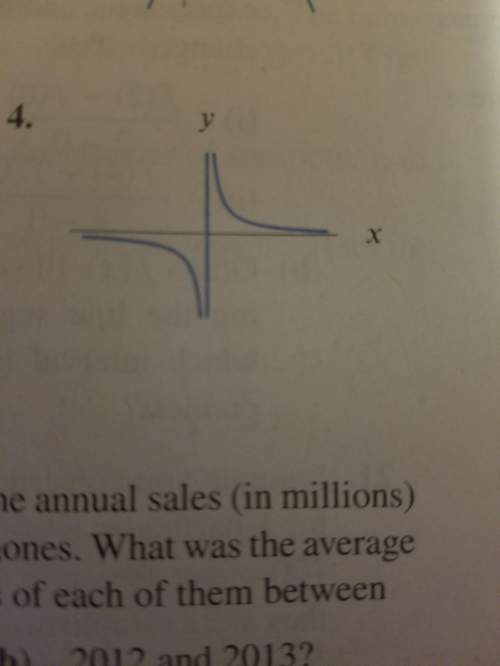
Mathematics, 05.09.2020 23:01 amiahmiller79
A specific radioactive substance follows a continuous exponential decay model. It has a half-life of minutes. At the start of the experiment, 82.6g is present.
a. Let t be the time (in hours) since the start of the experiment, and let y be the amount of the substance at time t. Write a formula relating y to t. Use exact expressions to fill in the missing parts of the formula.
Do not use approximations.
y= ___e^
b. How much will be present in 18 hours?

Answers: 2
Another question on Mathematics

Mathematics, 21.06.2019 14:30
Each morning papa notes the birds feeding on his bird feeder. so far this month he has see. 59 blue jays, 68 black crows, 12 red robin's and 1 cardinal. what is the probability of a blue jay being the next bird papa sees
Answers: 3

Mathematics, 21.06.2019 23:00
Solve the problem by making up an equation. a man could arrive on time for an appointment if he drove the car at 40 mph; however, since he left the house 15 minutes late, he drove the car at 50 mph and arrive 3 minutes early for the appointment. how far from his house was his appointment?
Answers: 1

Mathematics, 22.06.2019 01:00
For every corresponding pair of cross sections, the area of the cross section of a sphere with radius r is equal to the area of the cross section of a cylinder with radius and height 2r minus the volume of two cones, each with a radius and height of r. a cross section of the sphere is and a cross section of the cylinder minus the cones, taken parallel to the base of cylinder, is the volume of the cylinder with radius r and height 2r is and the volume of each cone with radius r and height r is 1/3 pie r^3. so the volume of the cylinder minus the two cones is therefore, the volume of the cylinder is 4/3pie r^3 by cavalieri's principle. (fill in options are: r/2- r- 2r- an annulus- a circle -1/3pier^3- 2/3pier^3- 4/3pier^3- 5/3pier^3- 2pier^3- 4pier^3)
Answers: 3

Mathematics, 22.06.2019 02:00
The table below shows the approximate masses of a dust particle and a grain of pollen. dust particle 0.000000778 g grain of pollen 0.00000000155 g the mass of a dust particle can be estimated and written in the form a × 10^b, where a = 8 and b = the mass of a grain of pollen can be estimated and written in the form a × 10^b, where a = 2 and b = based on the estimates, the mass of a dust particle is approximately blank times larger than the mass of a grain of pollen.
Answers: 1
You know the right answer?
A specific radioactive substance follows a continuous exponential decay model. It has a half-life of...
Questions

Mathematics, 05.05.2021 22:50






Mathematics, 05.05.2021 22:50


Biology, 05.05.2021 22:50

Biology, 05.05.2021 22:50

Computers and Technology, 05.05.2021 22:50

Mathematics, 05.05.2021 22:50


Mathematics, 05.05.2021 22:50



Mathematics, 05.05.2021 22:50



 where
where  is the decay constant.
is the decay constant.







